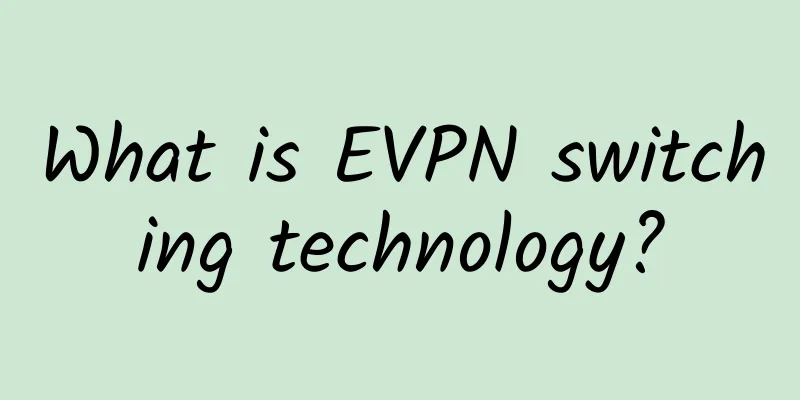Will 5G slicing turn operators into "patchers"? Here's how operator experts interpret it

|
Topic fuse: What is network slicing? This new concept has been frequently seen in the media with various reports on 5G. To be precise, network slicing technology allows operators to divide multiple virtual end-to-end networks in a hardware infrastructure. Each network slice is logically isolated in terms of equipment, access network, transmission network and core network, adapting to various types of services and meeting different needs of users. However, an international industry expert recently pointed out that the implementation of 5G slicing technology is far from easy, "more complicated and messy than imagined". It needs to be sliced according to service level or network topology, vertical field, virtual operator business, different network technology, etc., but "these slices are integrated and intertwined with each other". Operators will eventually become a "patchworker", trying their best to stitch these "slices" together. In this way, the operator will no longer be like an operator, but more like a "system integrator." Based on this, Communication World Omnimedia recently invited major operators and equipment manufacturers to interpret the technology and business of 5G slicing, trying to help readers understand the development of this new technology. Regarding the architecture and business prospects of 5G slicing technology, experts from China Telecom and China Mobile made the following interpretations from professional perspectives. China Telecom: Network slicing is an ideal architecture for 5G, but commercial use still faces many challenges Technology Innovation Center of China Telecom Corporation Limited Li Jinyan Yang Fengyi Mei Chengli The 5G era is coming, and applications based on mobile networks are becoming more and more abundant. In order to meet the differentiated needs of many applications, network slicing is the most discussed technology in the research process of 5G technology. The concept of network slicing allows network elements and functions to be easily configured and reused in each network slice to meet specific application requirements. Therefore, many industry insiders believe that network slicing is the ideal network architecture in the 5G era.
Network slicing technology allows operators to divide multiple virtual end-to-end networks in a hardware infrastructure. Each network slice achieves logical isolation in terms of equipment, access network, transmission network and core network, adapting to various types of services and meeting the different needs of users. For each network slice, exclusive resources such as network bandwidth, service quality, and security can be fully guaranteed. Since the slices are isolated from each other, the error or failure of one slice will not affect the communication of other slices. The advantages of network slicing technology make it occupy an important position in 5G networks. Progress of network slicing standards by 3GPP, NGMN, and GSMA In order to meet the network's demand for flexible support for different services under the 5G framework, different standard organizations such as 3GPP, NGMN, and GSMA have conducted relevant research on network slicing. 3GPP Network Slicing Standard Progress Since 2015, 3GPP has started the research and formulation of 5G-related standards, and plans to complete the formulation of relevant standards in three major versions, R14~R16. As an important technology of 5G, network slicing has received great attention from 3GPP. SA1 scenario research, SA2 framework formulation and SA5 network management have all formulated special topics for network slicing. SA1 conducted a demand analysis on network slicing as a basic capability of 5G in TS22.261, and believed that network slicing can provide operators with customized networks, and can meet users' differentiated needs in terms of priority, billing, policy control, security, mobility and other functions, as well as differentiated needs in terms of latency, reliability, rate and other performance. 5G slicing can also serve group users such as public safety and MVNO, making the network more flexible. In addition, the SA1 working group also requires that the subsequent 5G system standards must meet the above slicing requirements. The SA2 working group proposed three alternative network slicing scenarios in the TR23.799 next-generation network architecture research.
After discussion, it was decided that only the slicing scheme of Plan B (Scheme C is a special scenario of Plan B) would be considered before R15, that is, only partial functional slicing of the user plane and control plane would be considered, as shown in Figure 1.
In addition, the SA2 working group reached the following conclusions regarding functions such as slice selection and implementation (see Chapter 5.15 of the TS23.501 specification for details).
Currently, the SA2 working group is conducting further discussions and research on whether the slice selection module should be deployed in conjunction with existing modules (such as AMF) or deployed separately. It is also conducting further confirmation and research on issues such as the management of network slices and their association with transmission. In terms of network slicing management, based on the requirements of standard organizations such as SA1/SA2/NGMN for slice management and configuration, the SA5 working group studied the management and scheduling methods of slices, as well as slice management across multiple partners and domains, to automatically implement and manage the isolation of resources between different slices. To cater to more flexible sliced networks, SA5 has made it clear that SON will also play an important role in 5G. Currently, the research report TR28.801 on network slice scheduling and management is about to be completed. NGMN Network Slicing Standard Progress NGMN introduced the concept of network slicing in its 5G white paper, believing that this technology can flexibly select modules and resources on the user plane, control plane, and wireless side based on business needs, optimize network resource allocation, achieve maximum cost efficiency, and meet the needs of diverse new 5G services. As shown in Figure 2, network slicing is defined as a comprehensive concept that includes the service instance layer, network slice instance layer, and resource layer. The service instance layer identifies the services supported by this slice, which can be provided by network operators or third parties; the network slice instance layer allows operators to create slice instances, and the resource layer provides shared resources for each slice instance to use.
The white paper points out that in order to achieve the above-mentioned flexible architecture, the user plane and the control plane must be completely separated, and open connections must be established between the modules. The white paper also points out that how to divide the granularity of modules and slices is a complex issue. Fine granularity can bring better flexibility, but it will also greatly increase the complexity of management and deployment. GSMA Network Slicing Standard Progress As an organization with extensive participation of mobile operators, GSMA also attaches great importance to the research and industrial application of network slicing. In 2017, GSMA set up the NEST project team to conduct research on network slicing to support vehicle applications. The working group started the relevant research work in March 2017 and is expected to complete the research on how 5G mobile networks can better serve the vehicle industry-related applications within one year and form a slicing document for reference by the automotive industry. To achieve this goal, GSMA has already started collecting requirements from the automotive industry and defining targeted network slicing parameters. Domestic network slicing testing has entered the second phase In the first half of 2016, the IMT-2020 Promotion Group jointly developed network slicing test specifications with various units. The test was conducted on a voluntary basis in the laboratories of various manufacturers. Huawei, ZTE, Ericsson, Shanghai Nokia Bell, Datang Telecom, Intel and other units participated in the corresponding tests, which were completed in the third quarter of 2016. In the first phase, the equipment of various manufacturers is basically still in the prototype stage, and the testing mainly focuses on functionality. More than 20 use cases are tested around features such as slice templates, slice lifecycle management, slice selection, slice sharing, slice multi-access, slice maintenance, and slice business indicators. The second phase of test specifications are currently under discussion, and plans to test slice selection, slice orchestration capabilities, linkage expansion, and business capability verification of typical slices. The test specifications are expected to be frozen by the end of June 2017. The second phase of testing further adds functional items and focuses on usability. The tests are uniformly conducted at the China Academy of Information and Communications Technology. Deployment, management and application face many challenges From the previous analysis, we can see that the standards for network slicing are still being formulated and improved, and the tests that can be carried out by the industry are still in the laboratory stage. As a mobile operator, in addition to paying attention to the progress of technical research, we are more concerned about the deployment, management and application of slices. Before network slicing meets the requirements for commercial deployment, the following issues need to be focused on and resolved. Granularity and flexibility of slicing Slicing has attracted much attention because it can meet the needs of multiple services and different user groups through network segmentation. How many slices to divide and what the granularity of the slices is are complex issues that cannot be avoided during the deployment process. If the granularity of the slices is too large, it will easily lead to insufficient flexibility and fail to meet the requirements of differentiated services; if the granularity of the slices is too fine, it will greatly increase the complexity of management and deployment. In addition, because resources between slices cannot be dynamically shared, too fine a granularity of the slices will also reduce the utilization of network resources. The biggest advantage of slicing is the flexible release and deployment of services. Different operators have different views on the flexibility of slice deployment. Some operators hope that slices can be deployed very flexibly, just like the 4G policy control architecture with a certain degree of real-time performance. Some operators believe that overly flexible slices may increase the cost and risk of network management. After all, stability and reliability are also important network considerations, and the release of new services is not achieved overnight, and requires a lot of business preparation and analysis. End-to-end slicing implementation The 5G slicing vision mentioned by NGMN in the 5G white paper is the realization of end-to-end network slicing, which includes not only slicing of the core network user plane and control plane, but also slicing of the wireless side. Only end-to-end slicing and network refinement can meet the special requirements of special scenarios in terms of latency, security, etc. At present, the research on wireless slicing is limited to supporting the core network slicing function, and the wireless slicing scenario has not been considered separately. The existing core network slicing function cannot well meet the differentiated needs of typical business scenarios. The lack of wireless network slicing cannot well reflect the value and advantages of slicing, and it is impossible to get a good commercial promotion. When the wireless side slicing function will be completed brings technical uncertainty to the end-to-end slicing application. Slice virtualization management SDN/NFV is the cornerstone of slicing technology. Slicing functions should be incorporated into the virtualized management and scheduling system. 3GPP SA5 has carried out relevant research. Limited by the progress of SA2 and RAN architecture research, SA5 has not yet given a clear conclusion on slice management. In addition, how to improve the response speed of virtualized management to ensure the flexible and reliable implementation of slices also needs to be further studied. Backward compatibility issues with slices In the slicing scenario analysis of TS23.501, the three typical applications of 5G are eMBB, uRLLC and mMTC. Considering the compatibility with the existing network, can the 4G network be managed and accepted as a special slice of 5G? If technically feasible, it will avoid considering the complex interoperability issues between 4G and 5G, protect existing investments, and greatly facilitate existing network users. Application of slices 5G has been highly anticipated since its birth, and it is hoped that 5G can meet the needs of various complex application scenarios such as eMBB, uRLLC and mMTC. Based on the different network requirements of different applications, network slicing came into being under the 5G architecture. Good applications and good business models are the driving force for network development. It is hoped that when 5G is deployed, the network will no longer be a pipe and data carrier, but a rich network that glues applications and users at the beginning of deployment. To this end, slicing should pay more attention to application needs at the beginning, combine typical applications in the industry when formulating technical specifications, and deploy it together with applications during deployment. At present, GSMA has carried out relevant work and set up a special project team to study the slicing needs and networking of the automotive industry. At present, there is no active participation of automobile manufacturers or operators in the discussion of needs. In order to really use slicing well, the participation of application companies is indispensable from technology formulation to network testing to operation. Only in this way can the market for slicing applications be developed well. China Mobile: Slicing technology makes the network flexible and efficient, and pilot projects have been carried out in China Communications World Omnimedia reporter Cheng Linlin To meet the needs of 5G networks, China Mobile, as a leading domestic operator, has been actively conducting research on network slicing. At the 2017 MWC exhibition, China Mobile, together with Huawei, Deutsche Telekom and Volkswagen Group, released the "White Paper on Service-Assured 5G Network Slicing".
In its network slicing white paper, China Mobile affirmed the important role of network slicing in 5G, and pointed out that in order to ensure that 5G networks can cope with changing business needs, especially the business needs of vertical industries, network slicing will provide end-to-end network solutions with guaranteed services. Diversified network slicing methods Network slicing technology can fully improve the utilization of network resources by segmenting the network, making the network more flexible and efficient to adapt to the business needs of 5G. Slicing technology is also a capability that future 5G networks should have, which can enable CT systems to be virtualized and managed and maintained like IT systems. If the CT system is to be IT-based, then the SDN/NFV-based network is the basis for end-to-end network slicing. Operators can use the SDN/NFV platform to virtually match and map network resources, generate different logical functions, and then use the orchestrator to provide corresponding services to meet the network capability requirements of various application scenarios, thereby achieving network slicing. At the first Global 5G Conference, the IMT-2020 (5G) Promotion Group released the white paper "5G Network Architecture Design", which pointed out that unlike the relatively single application model of 4G mobile Internet, the 5G network serves a large number of rich types of terminals and applications, and their message structures, session types, mobility patterns and security requirements are all different. The network must introduce different functional designs to meet the service requirements of different application scenarios. There are many specific network slicing methods, such as slicing according to business scenarios, service levels, network standards, and different enterprises. Slicing by business scenario can be done according to the three major business scenarios of 5G; slicing by service level, for example, China Mobile can divide users with special security needs into a slice and adopt a special billing method; slicing can also be done according to different enterprises, dividing enterprises of the same type into one slice, and providing some customized services. Although the advantages of slicing are obvious, the more slices, the better. While increasing flexibility, too many slices will make dynamic management and resource sharing between different slices more difficult, which is a big challenge for the platform, orchestration, and management. The more slices, the better. What is important is how to fully classify similar requirements into one category, thereby reducing the challenges posed by the number of slices to the platform. After slicing the network, a network orchestrator is needed to coordinate and manage the slices, arrange resources reasonably, and efficiently schedule them according to business needs. Challenges of network slicing deployment The concept of network slicing is to transform the CT system in an IT way. There is no successful case in the CT system. Although China Mobile is also exploring it, there is no large-scale commercial case to prove that this method is feasible. From the current development situation, applying the slicing concept to the existing network will face the following challenges. On the one hand, whether SDN/NFV is suitable for large-scale telecommunications-grade networks, especially for traditional operators, how to ensure that hundreds of millions of users and large amounts of data can run reliably on the existing network. On the other hand, if network slicing is to be achieved, not only the dynamic real-time generation, management and maintenance of slices need to be explored, but also how many slices to generate, how to share and isolate resources between slices, and security issues all need to be explored. In the future, the boundaries between core networks and wireless networks will become blurred Network slicing technology not only brings changes to service deployment, but also changes to network structure. In the future, low-latency applications require localized deployment and direct information exchange between each other. In this case, some functions of the core network must be moved down to the base station, even very close to the base station, so that the service can be directly delivered to the user and the latency can be kept short. Low-latency and high-reliability services are important services for future 5G, requiring end-to-end network delays of only a few milliseconds. If the network is deployed in the traditional way, the delay will increase if there are too many network elements from the wireless network to the core network, which will make it difficult to meet the service requirements. Therefore, sinking the core network functions to the edge to reduce the number of network elements transmitted and thus reduce latency will be an important trend in future network development. Network slicing technology may blur the boundaries between the core network and the wireless network. Slicing technology can flexibly mobilize network resources according to user needs to form a virtual network. These slices are logically independent but physically shared. 4G networks use a centralized core network deployment and wireless network edge deployment. In the future 5G network, the boundary between wireless and core networks will become blurred. Not only will the core network sink to the edge, but wireless networks will also tend to be centrally deployed in the future. If the non-real-time processing in the protocol is decomposed from the base station, the base station can collaborate better, and the deployment of MEC can be more in-depth. The sinking of core network functions will bring many problems, such as billing. Traditional core networks use centralized operation and billing. In the future, the billing method will also change when core network functions are decentralized. For example, the billing agent may be decentralized to the base station. The base station collects the billing information during the data transmission process and uploads it to the centralized unit. Safety issues are an important research direction After slicing the network, it is also very important to ensure security. Security issues are divided into two aspects: one is user data security, and the other is network security. In terms of user data security, different users have different security requirements, and different solutions can be developed for different users through methods such as physical isolation. In terms of network security, it is important to prevent the network itself from being attacked. The core network has always been deployed in a centralized manner, which is easier to manage and easier to ensure security. In the future, if the core network is moved down to the edge or even the base station, and the security of the environment around the base station is difficult to ensure, once the network is attacked, the security of the data will face a great threat. Therefore, after the network is sliced, how to ensure the security of the network itself is a great challenge. In order to ensure the security of network slicing, many aspects need to be considered, but we should not throw the baby out with the bathwater. We must take into account both flexibility and security. Taking both aspects into consideration will be an important research direction in the future. Actively promoting the implementation of 5G technology at home and abroad The core concepts of 5G network are user-centric, functional modularization, and network orchestration. It reconstructs network control and forwarding mechanisms, changes the single pipeline and rigid service model, and provides on-demand customized network architecture for different users and industries based on a common shared infrastructure. It also aims to build a social information service enabling platform with full resource sharing, easy function orchestration, and tight business coupling, so as to meet the ultimate experience, efficiency and performance requirements, as well as the vision of "Internet of Everything". Domestic and foreign operators are paying close attention to the progress of 5G slicing technology. AT&T, Deutsche Telekom and other foreign operators are actively researching 5G slicing technology and conducting business trials, trying to drive the R&D system and operation and maintenance system to adjust to future platform changes through trials. AT&T proposed that it hopes that the future network will be fully software-based and virtualized, with development and application closely integrated. Conservative operators are considering using existing EPCs to implement some functions through virtualization. "In the face of new demands and technical challenges, global operators, equipment manufacturers and vertical industries should jointly consider how to further improve the availability of network slicing. This requires cross-layer and collaboration in multiple fields such as access network, core network, transmission and bearer network, network functions, network platform and business layer, and innovative design in a more open way." said Wang Xiaoyun, general manager of China Mobile's Technology Department.
China Mobile strives to realize network slicing and end-to-end network capabilities when 5G is fully commercialized in 2020. China Mobile is trying to transform the EPC or IMS system with SDN/NFV technology, and is currently conducting pilot projects in 5G slicing, which have made good progress. It is hoped that these practices can pave the way for future 5G applications and promote the realization of end-to-end slicing of the 5G core network. China Mobile will also conduct cooperative tests with equipment manufacturers such as Huawei and ZTE to cooperate with the ongoing 5G tests and gradually push 5G slicing technology to maturity. |
<<: To help students' future, Ruijie Smart Cloud Classroom creates a new teaching model
Recommend
LOCVPS newly launched Hong Kong MG high bandwidth line, 20% off, starting from 29.6 yuan/month, recharge 100 yuan and get 10 yuan
LOCVPS has newly launched a Hong Kong MG (BGP/Int...
HostYun National Day promotion 15% off, Hong Kong/Japan/US/Korea VPS monthly payment starts from 15 yuan, optional CN2 GIA/AS9929
HostYun has launched a 15% discount coupon during...
How to ensure the security of 5G wireless networks
5G creates opportunities for both users and cyber...
Are you still using 4G? 6G is coming soon. The battle for 6G among countries has quietly started nearly 20 years ago.
When China leads the world in 5G technology, the ...
ZJI: 520 yuan/month Hong Kong server-2*E5-2630L/32GB/480G SSD/30M bandwidth/2IP
ZJI has released a special promotional dedicated ...
Inventory: Three basic elements and five characteristics of the Industrial Internet
Three basic elements of the Industrial Internet S...
A brief discussion on operation and maintenance under SDN architecture
At present, the domestic network operation and ma...
Microsoft: Azure Quantum quantum cloud platform is now open for public preview
Microsoft's Azure Quantum cloud platform uses...
Comprehensively promote IPv6 and completely change network life
If you have been following the developments in ne...
How Open RAN and 5G impact sustainability
Mobile service providers, infrastructure manufact...
EtherNetservers: Los Angeles VPS starts at $12 per year, 1GB/30GB/2TB/2IP, supports Alipay/PayPal
EtherNetservers' cheap annual VPS is currentl...
Can high-speed fiber optics connect smart factories?
In order to keep factories moving forward, the in...
6G: Everything you want to know is here!
2019 has become the first year of 5G. South Korea...
Tencent Cloud mid-year discount preview, pre-heating exclusive 618 yuan early bird coupons with one click
Tencent Cloud's annual mid-year discount 618 ...
How to Start Building an SD-WAN RFP
Enterprise network teams need to draft software-d...









